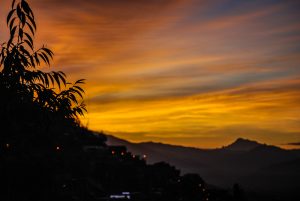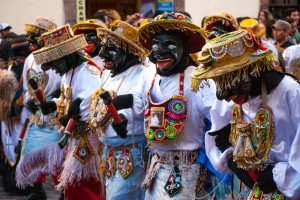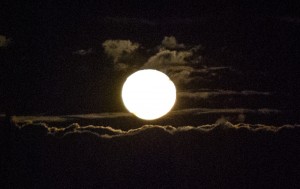Cuzco Celebrates its Fiestas Enthusiastically

Cuzco breaks out in massive celebration occasionally. Not only do the residents of the Imperial City throng its Plaza de Armas, its main square, but people come from far and wide for the events. The crowd comes for many reasons, some personal, some contemporary, and some whose roots god deep into our past.
While our feasts respond to the contemporary Catholic calendar, or the scheduling of important days by the modern city, state, and national governments, it also has a relationship to ancient Andean ways.
The people of the whole territory of Tawantinsuyo, the land of four quarters, the indigenous name for the Inca Empire, had a tight relationship with the cosmos. They expressed this in the various manifestations of their culture. They frequently used symbols that were related to the cosmos. For example, the Southern Cross is represented in the chacana, the Andean cross, which is a subject of research and thought from then to now.
People carried the universe in their eyes. Every night they could look at the sky and see an amazing spectacle of stars emblazoned across the sky. It illuminated not just the night, but their minds. They thought about what was visible, and about what was invisible to the senses. During the day they continued this in their observations of the sky and became devoted to the sun, who they considered their father. The cosmos (including the earth) was considered their mother, the Pachamama.

In their mountainous world they also had many sacred places and deities for whom they held great respect and devotion.

For these the people would break out in celebration at the appropriate time and in the right place. As a result, the city of Cuzco, the Imperial capital would celebrate the sun with great majesty, as part of an enormous celebration they carried out through the whole territory of Tawantinsuyo.
In spite of the efforts of the Spanish and contemporary leaders to stamp out these celebrations and feasts, a surprising number of them continue today. In their syncretism with the various layers of history and pressure from pre-Columbian times to the present, we find the bases of a deep Andean devotion that goes far into our past.
Among these feasts are those that today celebrate the patron saints of the different neighborhoods of Cuzco as well as of the communities and towns that form the department (state) of Cuzco. While having a Catholic focus, they also emphasize the people of the communities and their relationships with one another, as well as their relationship with the land around them and the cosmos.

But above all was and is the feast of the sun. This celebration was the most popular but we have no complete and unchallenged statement of it, because of the destruction due to the Spanish Invasion.
Several Spanish chroniclers mention the feasts. Some say they followed a calendar based on the solstices, other give other references. In general we can say that they all speak of how magnificent the feast of the sun was, among the many splendid celebrations of the Incas. They speak of the strong devotions of those they considered “gentiles”. In their work we find harmonies and disagreements, but in reality they do not leave us a complete idea of the beauty, majesty, or reality of these collective manifestations of faith.
When the Spanish came, the occupied part of the city of Cuzco. As a result, the festivities had to take place elsewhere than planned. It is said that the people awaited the rising sun with very sad songs, sobs, and fasting. As it arose, an immense joy awoke within them. They were transported into glory on feeling, wanting, living, awakening with the contact of the solar rays. Their songs quit being sad and turned into ones of joy.
After the ceremonial ritual where they saluted their deities, they carried out sacrifices of llamas. Some of the chroniclers mention even human sacrifices of thanksgiving and hope. Then the whole populace entered into collective joy and celebrated the feast of the sun with happy music, abundant chicha, dances, and an abundant feast of roasted llama meat, potatoes, corn, and more.
The feast of the sun was just one of the celebrations carried out by the Incas. They had other motives for collective celebration, sucha s the feast of warachikuy pr the first days of the sowing and of the harvest. When celebrating they would drink for several days, and they would eat, play music, and dance. They did not have to worry about supplies of foods since they were able to rely on the storehouses, the Qolqas, the Incas kept for such needs. The feasts were organized by the state and for the enjoyment of the people, so that they would have joy after so many days of work.
If you have ever been to Cuzco during the month of June, or during one of its other great feasts, you have enjoyed at least one of the many celebrations that take place in the city. From religious feasts, such as Corpus Christi, to civic and folkloric parades, dance troupes, allegories, festivals, fairs, these numerous events go on to include the representation of Inti Raymi. All the cities social organization participate. So many celebrations take place that month that you cannot miss the feasting.

They people take great interest in participating in the celebrations whether as performers or as spectators. They compete with one another for honor and awards. The competition is severe.
Since one of the main economic activities of Cuzco is tourism, the celebrations take on even more importance. They draw thousands of visitors who are important to the city’s economy.
In the streets you can feel the excitement and joy of the Cuzqueños. They always have sufficient motives for partying and enjoying the day and event. The parades bring stands of food and drink into the open air. You can eat and drink in the streets and plazas openly because Cuzco is officially at feast, when on ordinary days it is either prohibited or frowned on.
People are accustomed to gather as families and friends to eat and drink and public on feast days. Even though the food is no longer provided by the Inca state and must be acquired with money, people do not lose the custom of public eating and drinking. In fact, our celebrations are typified by the excessiveness of joy and consumption.
It is not unusual to see people openly and publicly drunk. Even though people may have no idea of how or when these customs originated and some people may criticize them severely, they have deep roots among us. We could say they are in our “genetic memory”. What ever ones opinion about the public drinking and celebrating, these feasts are marvelous to see.

They now have new touches appropriate to our modern times, such as concerts, amplified music, light shows, fireworks, bottled beverages, fast food, different stages (parks, plazas, bars, and discotheques) where the celebration can go through the night without limit.
It maybe a paradox, but these new places and customs go hand in hand with ancient practices we keep alive. The devotion to our landscape, especially to our waqas (sacred places) have not lost importance, even if many modern people seem to have no time or inclination to pay attention to the movements of the night sky and the cosmos.




